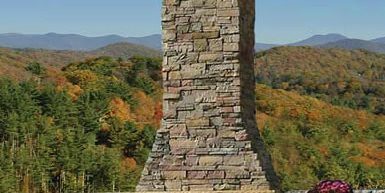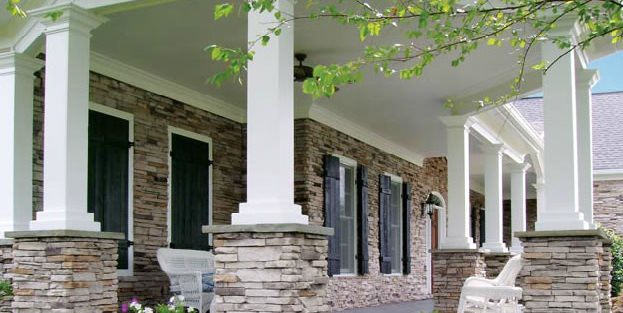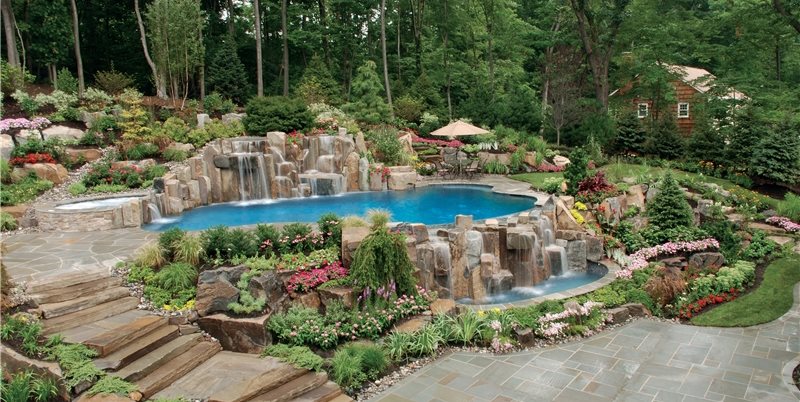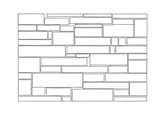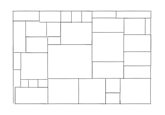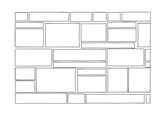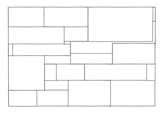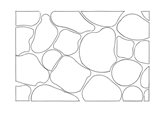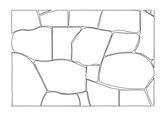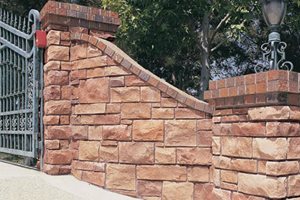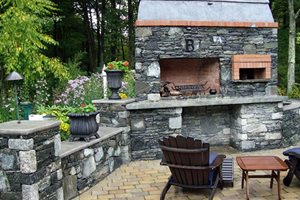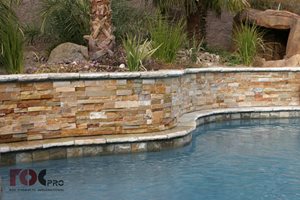Stone Veneer Patterns
Compare popular veneer patterns such as stacked stone, ashlar and moreEvery landscape and outdoor living space is attached to a house. It's the architecture and indoor style that dictates what's best for exterior stone masonry. When the two don't speak to each other in aesthetic terms, there's a visual disconnect. It might not be that apparent to some, but when you've spent a great deal of money on the perfect stone improvements for your patio or terrace, it's essential to get it right.
"Above all, beware of trends," says landscape architect Matt Schmuke of Apex Landscape in Grand Rapids, Michigan. "The problem is that architecture today is watered down so there's not much to guide you in making design decisions. That's why you get the latest trend, which right now is ledgestone, so we use it because that's what customers want. Cultured ledgestone in 10 years will be passé like the fake brown and black stone of 1990s trends, which looks horrendous now. "
Schmuke, and many other designers are loathe to use trendy choices. Generic architecture is the most vulnerable to trends that pass and then look dated all too soon. For these homeowners who don't have a clear picture of what pattern suits their home, choices should be given double the consideration to arrive at a timeless stone pattern that will always be worth every penny invested.
Whenever veneer can be used to create beloved local stone masonry traditions, it is a wise investment because that's not a trend but a long term regional standard. Dry laid stone of New England is the best example. David Croteau of Stoneyard.com in Massachusetts is a third generation dry stone waller who knows what a good wall should look like. He has developed a quality line of veneers to cater to customers who want that traditional look using lighter weight veneers.
"Our stone used for Boston blend is recycled. The colonists found their fields filled with glacial fieldstone throughout New England from southern New Hampshire through Connecticut. Fieldstones were set aside to the edges of fields while clearing, which were later built into our famous dry stone walls. Now, 125 years later, the walls that can't be preserved any longer or those already totally disintegrated become our starting point for the veneers so there's a perfect match in color and texture."
"We classify each stone as round or flat. With rounded ones we slice off the outside face, then cut the inner core into layers for ledgestone. With flat stones we have more choices. Ashlar is made of 3" to 8" rectangular slices that are slightly larger than ledgestone. In the end only the top and bottom are left, and these are used for more rustic natural face of our slightly rounded Boston blend veneer."
Standard Patterns
Consider masonry patterns generic terms. They define a general look of the finished product, but each source of either natural stone or manufactured stone will have their own variations on that theme.
At Eldorado Stone a national distributor of manufactured stone veneers, ledgestone is always popular. "We are seeing more ledgestone style with many profiles that extend the original look to include more contemporary clean design or a more rustic look. We recently launched Ledgecut 33, which is a very dry stack tight fitted product that is highly uniform that simulates cut travertine for modern contemporary seamless look for higher end applications outdoors, but they're using it for interiors too."
"We like the European look and began with rustic product, but in specific regions the contemporary dry stack is in, mostly in California and high end communities of the east coast. It's strong in modern architecture out west. We are now doing studies to produce new products that offer more options for clean, streamline stone patterns."
Most patterns fit into one of the following three categories, but there are many subtle differences in the way the stone is cut or formed that yield wide variations within those basics below. Let these labels serve as an introductory guide to help you sort out what's available, not a hard and fast definition. Assess each potential source and their own unique in house variations on these themes to assist with more accurate cost comparison
Horizontals - Dry laid
Ledgestone
A flat stone 2" to 8" high and 4" wide with two flat sides for easy stacking.
Stacked Stone
A flat stone about 4" high with two flat sides in varying lengths from about 8" to 20".
Square and Rectangles - Mortar and dry laid
Square and Rectangle
A pattern of square and rectangular cut stones that can vary considerably in size.
Ashlar
A pattern of square and rectangular cut stones that are more uniform in size
Rubble
A pattern of square and rectangular cut stones that are irregular in size and made to resemble reclaimed or very old masonry.
Irregular - Mortar
River Rock
An irregular pattern of rounded rocks that resemble naturally occurring cobbles.
Mosaic
A closely fitted pattern of flat stones that may be uniform in color or widely varied, rarely drylaid.
Mortar vs Dry Stack
Perhaps even more important than pattern is whether the stone will be set with mortar joints or a dry stack. The latter produces a veneer with no sign of mortar leaving an all stone surface, which is highly desirable for modern and contemporary styles. This is in part an aesthetic choice, but also a practical one. Over time problems with stonework in general often stem from mortar, which retains dirt, moss, algae and mildew.
- Pro Tip: We cut all our stone by hand so there's no joints so no mortar on the joints. People don't like the maintenance and dirt in the joints so the grout-less style solves that. --Scott Neave, Neave Group Outdoor Solutions
The first dry stack walls were in the Southwest where the look of historic pueblo architecture made with flat Arizona sandstone led to early applications. Now most other patterns can be set in a dry stack method, but it's not for every project. Many who seek that Old World look find the presence of creative mortar essential to the result they seek. Whether or not you choose mortar or a dry stack should be foremost in your process of deciding the pattern of your stonework.

 Backyards
Backyards
 Front Yards
Front Yards
